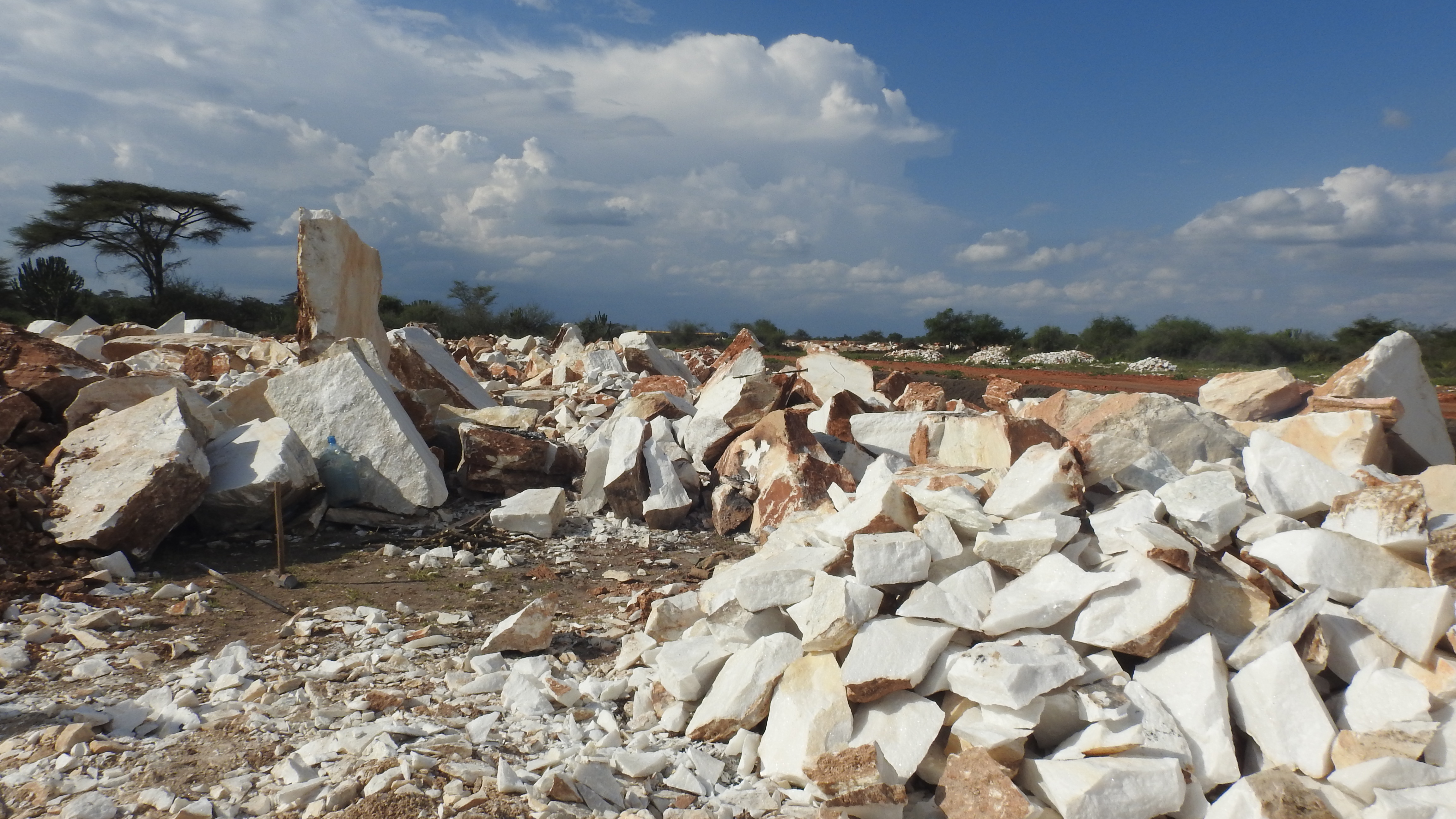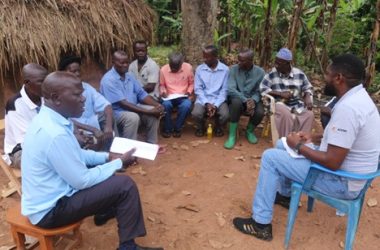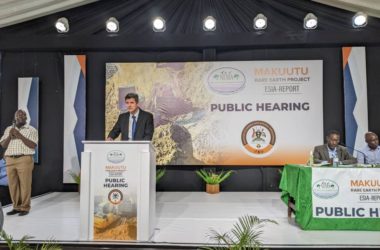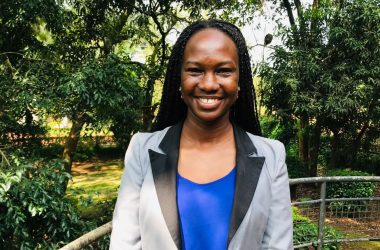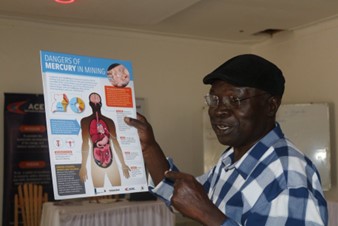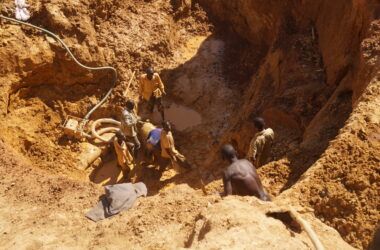The ACP-EU Development Minerals Programme is a capacity building program that aims to build the profile, and improve the management, of Development Minerals (industrial minerals; construction materials; dimension stones; and semi-precious stones). The programme is an initiative of the Organization of African, Caribbean and Pacific (ACP) Group of States, financed by the European Commission and UNDP, and implemented by UNDP. In this regard, the ASME Formalization & Business Development Acceleration Strategy, to be presented in the Artisanal and Small-Scale Mining & Quarrying (ASMQ) Conference, will chart a way forward for developing ASMEs into sustainable and profitable ventures. ACEMP’s Robert Mwesigye spoke to the ACP-EU Development Minerals Programme on this Strategy.
In a nutshell, what is the ASME Formalisation & Business Development Acceleration Strategy about?
The ASM sector is largely under-served in terms of technical oversight, business development support, knowledge, and capacity to comply to the mining code as well as access to affordable and adequate financing to facilitate acquisition of appropriate technologies for value addition. If you look at our new laws, the national Artisanal and Small-Scale Mining (ASM) strategy and related policies, momentum is moving into formalizing activities of ASM to address these challenges. In addition, one of the pillars for Uganda’s socio-economic growth is the extractives sector, including mining, where optimization of natural resources is critical; however, one of the roadblocks has been limited value addition and oversight especially for development minerals.
Therefore, we are really looking at how best we can complement these national efforts especially in investing in how to achieve this goal of a formalized, well organized, and supported ASM sector in Uganda, especially for Development Minerals. As you are aware, operations in development minerals have, until recently, not really been well strategically supported and this has led to missed opportunities to harness the potential for these minerals and materials to meaningfully impact national and sub-national income and livelihoods – both for the communities and even the Ugandan economy. Minerals such as sand, clay, dimension stones are often overlooked but when you look at their impacts on job creation, local economies and providing materials – for example, for housing and infrastructure – they are very critical.
The strategy is therefore a discussion and presentation of the factors that influence formalization especially in the Uganda context, as well as practical steps public and private sector actors can take to ensure that ASM formalization is realized. The strategy also provides a very good guide for stakeholders on how to do it and that’s why you are going to find a strong component of not only the tools and process, but also step by step guidance on the formalization and business development acceleration process for the ASM operators and stakeholders thus making this document very easy to utilize by all interested parties. The actors will know how to organize themselves and interface with the service providers. The strategy document provides such as guide to the government and other ASM stakeholders.
There is also a detailed five-year roadmap which is really showcasing actions that can be undertaken by stakeholders in the public and private sector to support the ASM Strategy of Uganda.
What informed the development of the strategy; what problem are you trying to solve?
Earlier, back in 2018, our programme has conducted the Baseline Assessment and Value Chain Analysis of Development Minerals in Uganda, which was the first document that put development minerals on the map. It showed that Uganda would realize positive outcomes to GDP (a potential increase of 1.6%), alleviation of its trade deficit (for instance, in 2016, Development Minerals and their products’ import bill amounted to 3.2% of Uganda’s trade deficit of -2.56 billion USD with ceramics (inclusive of bathroom ware, dishware and other products that can be derived from kaolin); salt (mainly in the form of iodized table salt); cement and other lime products; and gypsum representing the most significant contributors). Development Minerals also contribute an approximate USD 350 million in production value to Uganda’s economy.
This points to a significant, yet untapped source of livelihood for many Ugandans. Uganda’s National Development Plans and aspirations also indicate that Uganda is aiming for inclusive and sustainable economic growth and development. The recommended strategy is built on two solid pieces of analysis – one in 2021, done as part of the strategy development process and embedded in the strategy document, and one in 2018, the most comprehensive analysis of the Development Minerals (DM) sector in Uganda – the Baseline Assessment and Value Chain Analysis of Development Minerals (2018) report
The strategy has been formulated based on extensive assessment, based on consultation with over 100 stakeholders from all over the country. This assessment forms part of the strategy document. It assesses the state of the sector, the actors, the minerals, and the barriers that keep the miners small and informal. It also looks at the role of various stakeholders. So, in that sense, the strategy document is underpinned by very good analysis of reality.
This strategy is a presentation of the operating context of ASM in the Development Minerals arena reflecting very good analysis of factors affecting their reality and guidance for all stakeholders to undertake the necessary actions, including investments, for an inclusive and sustainable mining sector
Therefore, we need to invest strongly in this area to unlock the kind of capacities, opportunities, and value necessary to optimize these development minerals. We realise that it’s the right investments in innovation, value addition, and having a well-organized and supported ASM that will get us there, especially since production of Development is majorly (83%) from artisanal and small-scale miners.
If we are saying that there is opportunity in harnessing natural resources such as minerals; and if we are saying there are the bottlenecks in terms of limited access to financing; limited value addition and innovation; limited knowledge and capacity to secure requisite licensing by ASMs; and limited technical oversight and service provision to ASMs, then the solutions proposed in the strategy will help compliment, strengthen and add to the effort Uganda is making in its National Development Plan and the new Mining Code.
The recommended strategy is built on two solid pieces of analysis – one in 2021, done as part of the strategy development process and embedded in the strategy document, and one in 2018, the most comprehensive analysis of DM sector in Uganda.
What is the roadmap for this strategy after the launch? What plans do you have to popularize it among ASMs?
Already, a lot of work has been going on. We have been able to, with the ministries of Energy and Minerals Development (MEMD) and Ministry of Trade, Industries and Cooperatives (MTIC) to kick start engagements with local government officials so that they familiarize themselves with and roll out this strategy. This is because we realized that delivering this service and support needs to be led by the technocrats who are supporting the sector to transform and improve. We have a team from MEMD and MTIC that has been dedicated to covering all the districts that are targeted to explain the strategy, the plan, and opportunities.
Local government officials especially the commercial, natural resources and community development officers have been very instrumental in mobilizing and sensitizing ASMs. We are also in advanced plans to again support combined ministry teams to conduct various sensitisation meetings for all ASMs in all those districts to see how best they can actually start the journey.
The very fact that in formulating the Formalization and Business Acceleration strategy and in conducing the assessment, over 100 stakeholders, including many ASMEs were consulted. In this way, the strategy formulation engaged ASMEs from the beginning, and thus the process of socializing (and popularizing) the strategy already started from Day 1 when we started working on it. We have also already launched training activities for support in formalization of at least 90 associations for a start so that people can know that it is feasible, necessary and there are benefits to it.
What do you see as the biggest challenge hindering ASMs operating in development minerals progressing towards sustainable and profitable SMEs?
I would say there are two major challenges. One, endemically, technical oversight and support has been limited especially for development minerals ASMs. They have been operating with very limited guidance and support on provisions within the laws, their rights, and responsibilities and the knowledge and awareness about the possible alternatives to grow and benefit from the related value chains. We have been working alongside partners to break that knowledge and information barrier.
Of course, the other challenge is the finance aspect. People are aware that they can earn more from value addition but there is limited access to finance to procure the tools and technologies necessary to achieve this end. In addition, majority have failed to negotiate the kind of financing necessary to get on that ladder of transitioning to established and profitable SMEs. The lack of access to finance is caused by two things; one, in terms of the knowledge of the value of the minerals and materials: ASMs do not yet can quantify the minerals and materials they have and the ability to really demonstrate financial viability or security in the quest to secure credit and other financing into their businesses. But for development minerals that has been missing.
So, our programme has been supporting both the collection of geological data and helping ASMs to use the geological data and calculate their reserves to make a case for bankable business projects worth financing like in other sectors. Now, our ASMs are coming very close to being able to develop bankable proposals. Moreover, many of development minerals, especially those used in construction sector, face growing demand, even in the face of COVID-19, as the need for materials for construction and infrastructure is growing unrelentingly. We also invite construction and infrastructure companies to buy materials from ASMs that have been trained by our programme. The big players need to cooperate with the small players for the future economic development.
We hope that financial service providers join us in the journey to develop this sector and design responsive financial products because sometimes, you need to be visionary to actually make tailor-made solutions to this sector.
Those are some of the big challenges we have seen and of course even the knowledge – there are still so many value chains options that are not yet tapped into by artisanal and small-scale miners. The extraction, processing and utilization of development minerals is still highly rudimentary yet with the necessary exposure to techniques, innovation and research, operators in the sector can locally add value to offer wider product ranges, access bigger markets and thus earn more. The ASMQ conference is one of the opportunities to break these information and knowledge barriers because once people know the operating context, then they can plan better and position themselves to benefit more as they produce more value.
What opportunities in support of formalization can ASMs tap into from this project?
The Development Minerals programme has already invested strongly in providing grants. Since 2017 we have been proving grants to associations, CBOs and other enterprises who articulate the challenges they have on site and within their operations and have been able to purchase the equipment they need, register, and formalize operations, train mining association members in procuring the necessary protective gear, among other development and operational challenges.
We have also been able to catalyze some very good connections among the ASM community. Many people were operating in isolation but as we speak now, we see an increasing momentum of collaboration among the mining entities so it kind of helps address the supply bottlenecks. Also, people who have business opportunities can call on each other and fulfil some obligations which is good for the economy and of course, the community.
Another opportunity is about the training. We don’t underestimate need for the knowledge and skills necessary for the ASMs to progress, so we have invested heavily in that. Even as we speak, there are ongoing training series on enterprise management, mine, and quarry management; conflict management and addressing gender issues in mining. We have been really trying to bridge that knowledge gap so that people access the right information as well as acquire the necessary skills.
Ultimately, the programme is supporting catalytic efforts to mobilize stakeholders for action in a consistent and sustainable manner. We believe that the momentum generated by the Programme and the Strategy in discussion will continue to grow as we see other technical service providers, partners and ASMEs collaborate more to collectively address this issue of formalization and business development service provision. We hope that as a result, more opportunities to access financing, value addition capacity and wider markets will continue to accrue because of formalizing operations.
You have touched a key issue of gender. Do you have any gender-specific interventions, say women or youth?
One is an innovation challenge that we put out and one of the components was about working with women-led enterprises for them to be able to add value to their and access markets. We are hopefully going to finance some private sector entities in that regard. Also, as I mentioned the training and sensitisation, the capacity strengthening part of it, we have specific components that are being implemented targeting women in mining in terms of helping them formalize their businesses and skilling them in value addition so that they can thrive and grow, of course with very good awareness of the kind of challenges that women in mining are facing.
The last bit is the work we are commencing within next year (2022) on affirmative procurement. We are saying that at local government or national level, there should be at least some understanding and focus on awarding those contracts to women and youth. This project is really strengthening that engagement with public procurement entities because we have cases where women ASMs have been able to win contracts and they are creating jobs for themselves and others. We want to make it mainstream so that within the planning cycles of many entities, we have some gazette procurement leaning towards women and youth so they can access opportunities for income and livelihood. This will strongly make the mining sector equitable and inclusive of socially vulnerable groups.
As we conclude, any parting shot as we head into the ASMQ conference?
We appreciate the leadership at the Ministry of Energy and Mineral Development in all this and of course to Africa Centre for Energy and Mineral (ACEMP) for being a strong partner invested in this sector. We encourage all stakeholder to pick a leaf in the strategy and engage because we all have a role is realizing the national goals for harnessing the potential of the mining sector for Uganda’s development if we are to achieve the desired transformative and development outcomes. Everyone needs to critically do their part and that’s when the pieces can come together. We wish you a very successful ASMQ conference.

